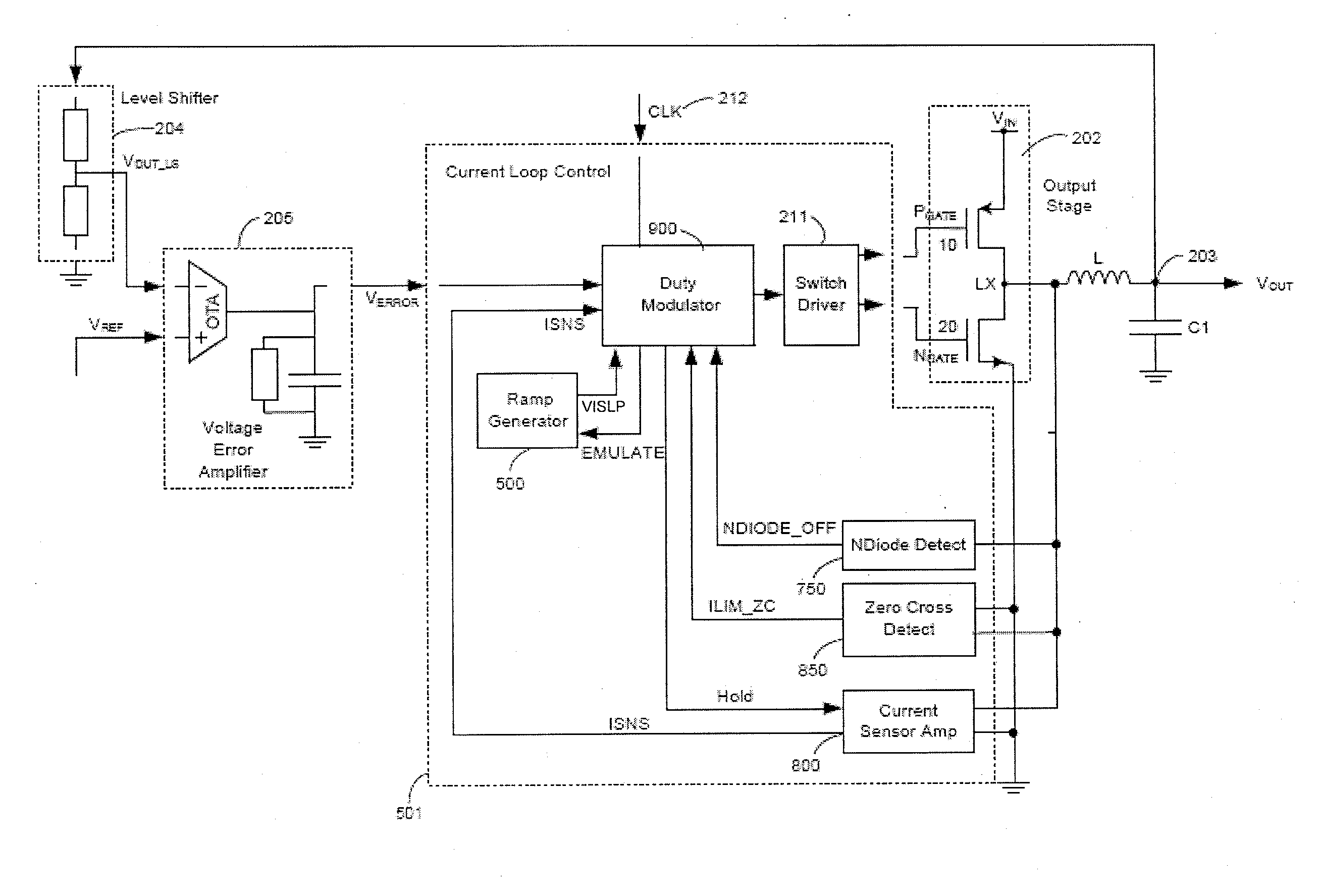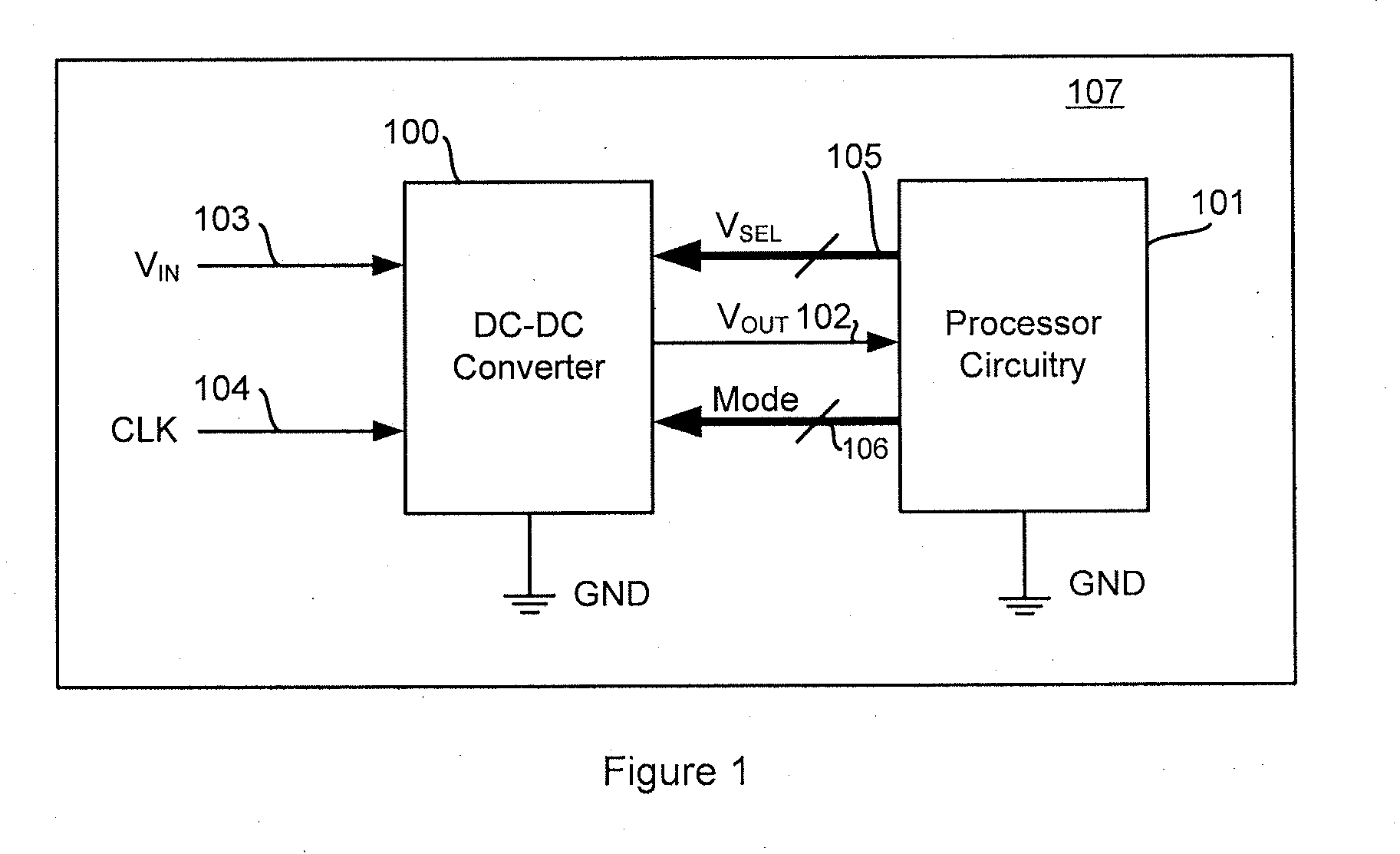Dc-dc converters
a dc-dc converter and converter technology, applied in the field of voltage converters, can solve the problems of increasing the switching speed, requiring a much tighter switch, and reducing the supply voltage of the processor, so as to improve the control of the dc-dc converter
- Summary
- Abstract
- Description
- Claims
- Application Information
AI Technical Summary
Benefits of technology
Problems solved by technology
Method used
Image
Examples
Embodiment Construction
[0082]FIG. 1 shows a typical application where processor circuitry 101, which may, for example, be a processor of a portable electronic device 107, is supplied with a voltage VOUT 102 by a DC-DC converter 100. The DC-DC converter 100 receives an input voltage VIN 103 and an external clock signal CLK 104 and outputs the required voltage output VOUT 102. It is usual for the supply voltage of a processor to be reduced when the processor is idling in order to save power, and then to ramp up to a more normal operating voltage where the processor may achieve full operating speed. The processor circuitry 101 therefore provides voltage select signals VSEL 105 to the DC-DC converter 100 to select an appropriate voltage output VOUT. The voltage select signals may be digital signals for controlling a programmable element of the DC-DC converter, such as a level shifter, as will be described later. The DC-DC converter 100 may also be operable in various modes, as will be described later, and the...
PUM
 Login to View More
Login to View More Abstract
Description
Claims
Application Information
 Login to View More
Login to View More - R&D
- Intellectual Property
- Life Sciences
- Materials
- Tech Scout
- Unparalleled Data Quality
- Higher Quality Content
- 60% Fewer Hallucinations
Browse by: Latest US Patents, China's latest patents, Technical Efficacy Thesaurus, Application Domain, Technology Topic, Popular Technical Reports.
© 2025 PatSnap. All rights reserved.Legal|Privacy policy|Modern Slavery Act Transparency Statement|Sitemap|About US| Contact US: help@patsnap.com



